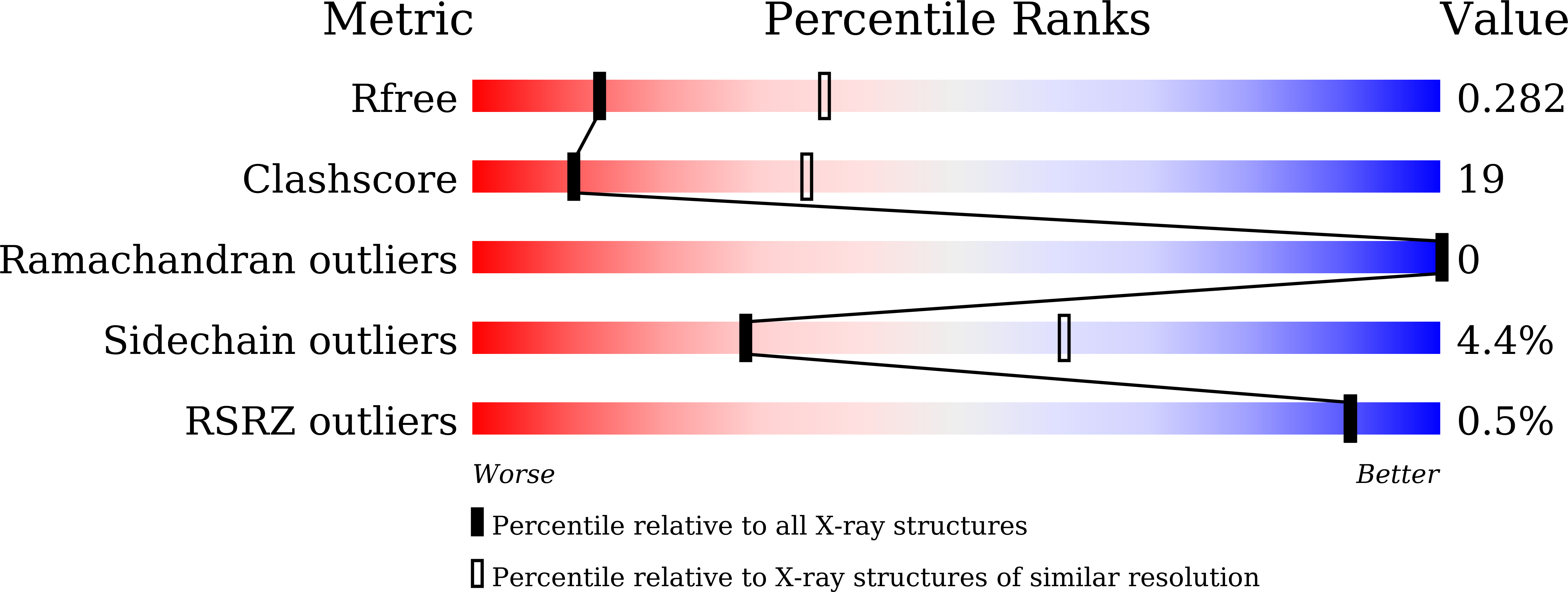Structural and Functional Diversity of Nairovirus-Encoded Nucleoproteins.
Wang, W., Liu, X., Wang, X., Dong, H., Ma, C., Wang, J., Liu, B., Mao, Y., Wang, Y., Li, T., Yang, C., Guo, Y.(2015) J Virol 89: 11740-11749
- PubMed: 26246561
- DOI: https://doi.org/10.1128/JVI.01680-15
- Primary Citation of Related Structures:
4XZ8, 4XZA, 4XZC, 4XZE - PubMed Abstract:
The nairoviruses include assorted tick-borne bunyaviruses that are emerging as causative agents of infectious diseases among humans and animals. As negative-sense single-stranded RNA (-ssRNA) viruses, nairoviruses encode nucleoprotein (NP) that encapsidates the genomic RNA and further forms ribonucleoprotein (RNP) complex with viral RNA-dependent RNA polymerase (RdRp). We previously revealed that the monomeric NP encoded by Crimean-Congo hemorrhagic fever virus (CCHFV) presents a racket-shaped structure and shows unusual DNA-specific endonuclease activity. To examine the structural and biological variation of nairovirus-encoded NPs, here, we systematically solved the crystal structures of NPs encoded by various nairoviruses, including Hazara virus (HAZV), Kupe virus (KUPV), and Erve virus (ERVEV). Combined with biochemical analysis, our results generate a clearer picture to aid in the understanding of the functional diversity of nairovirus-encoded NPs and the formation of nairovirus RNPs. Nairoviruses comprise several tick-borne bunyaviruses that are emerging as causative agents of infectious diseases among humans and animals; however, little is known of the nairovirus genome assembly and transcription mechanisms. Based on the previous study of CCHFV NP reported by different research groups, we systematically investigate here the structural and functional diversity among three different nairoviruses. This work provides important information on nairovirus nucleoprotein function and the formation of RNPs.
Organizational Affiliation:
State Key Laboratory of Medicinal Chemical Biology and College of Pharmacy, Nankai University, Tianjin, People's Republic of China Institute of Molecular Science, Chemical Biology and Molecular Engineering Laboratory of Education Ministry, Shanxi University, Taiyuan, Shanxi, China.














